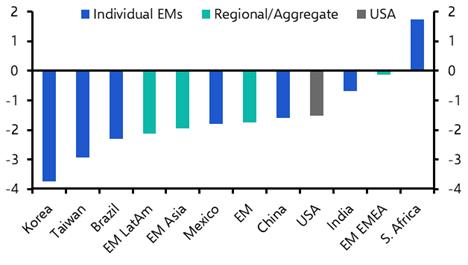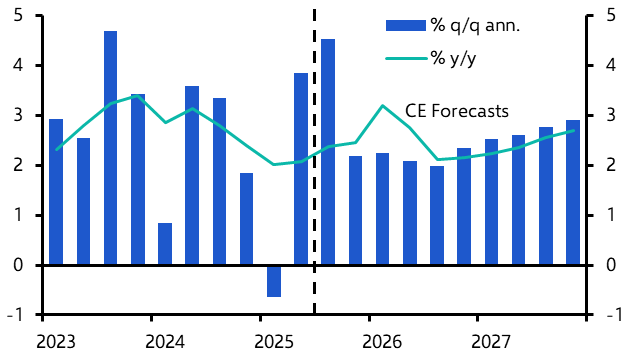President Trump likes to tell us that the United States “holds all the cards” in the ongoing trade war. Judging by the surprisingly mild inflationary impact of tariffs so far – less than most economists, including us, had anticipated – you might think he’s got a point. But it is far too soon to declare victory over inflation. Where America does hold a stronger hand, though, is in key areas of technology.
This is not unambiguously the case. China now leads the world in certain fields – battery technology and electric vehicles being the most prominent examples. According to one measure, from the Australian Strategic Policy Institute, China holds the global lead in 57 out of 64 key technologies. Yet the US – or, more accurately, the US and its allies – still dominate the most critical foundational technologies: those on which much else depends. Chief among these are advanced semiconductors.
Consider the recent case reported by the Financial Times: Chinese AI firm DeepSeek postponed launching its latest model because Huawei’s chips simply could not get the job done. The Chinese authorities, keen to reduce the country’s reliance on US technology, had urged DeepSeek to use Huawei’s Ascend processors instead of Nvidia’s. The result? Persistent technical snags meant the model couldn’t be trained successfully on the Chinese chips. In the end, DeepSeek resorted to using Nvidia for training (i.e. learning from data) and Huawei for inference (i.e. applying learned knowledge) – a compromise that says it all.
Why does this matter? Because, even as Beijing orders tech companies to justify their purchases of Nvidia chips on “national security” grounds, industry insiders admit the uncomfortable truth: Chinese-made processors still lag in stability, speed and software. If you are engaged in a race like this, handicaps like these are not ideal.
America’s lead in semiconductors owes a lot to the technological expertise of its allies. The world’s most advanced chips are designed by US firms (notably Nvidia) but produced in Taiwan (by TSMC) and rely on technology from the Netherlands and Japan. China has closed the gap on the US and its allies in many areas and will no doubt close it further, but it is trying to do this on its own. For now, the US and its allies remain ahead – and the question is how to use that advantage.
Under President Biden, the policy was clear: block exports of advanced chips to China, and cajole allies to do the same with the kit needed to make them. The early months of Trump’s new term followed this logic, with Nvidia barred in April from selling its advanced H20 chips to Chinese buyers. Then came the U-turn: the ban was lifted in July by Trump in exchange for a deal under which 15% of revenues would flow into US government coffers.
This is, in effect, a tax on exports – and one that sits oddly with Trump’s stated ambition to shrink the trade deficit. If tariffs are supposed to encourage domestic production, then export taxes, by the same logic, should encourage foreigners to buy from someone else.
Putting this economic illiteracy to one side, there is a growing debate in America over whether it should keep Chinese hands off its most advanced technologies or instead feed China’s dependence, thus creating leverage over a strategic rival. This debate has not gone unnoticed in Beijing. After scrambling to secure advanced semiconductors for years, Chinese leaders are now actively discouraging purchases of the H20.
Their wariness is understandable. This policy U-turn highlights the growing inconsistency of US policy. In April, H20 chip sales to China were framed as a national security threat; just a few weeks later, they were allowed – provided that Washington gets its cut. H20 chips may be considered too low-tech to threaten the US lead in AI versus China, but this abrupt reversal still smacks of opportunism.
For decades, businesses and governments have counted on the US to apply rules relatively predictably and transparently – especially in contrast to China. Now they are having to adapt to a policy environment that is not just inconsistent, but often incoherent. The greater risk is that this inconsistency and incoherence makes the US harder to rely on, weakening its leadership in a fractured world.
We’ll be discussing US-China tech competition and its implications for a fracturing global economy in a series of in-person events this September and October. Click here to register for events in Singapore, Hong Kong, London and New York.
In case you missed it:
- Leah Fahy argues that China’s deflation problems aren’t going away;
- Shilan Shah argues that members of the BRICS have less in common than most assume - and that this will limit how far political and economic ties are able to develop, and;
- William Jackson unpacks Mexico’s data centre boom.





